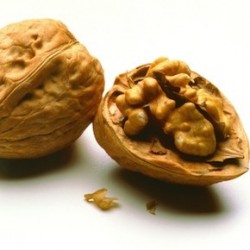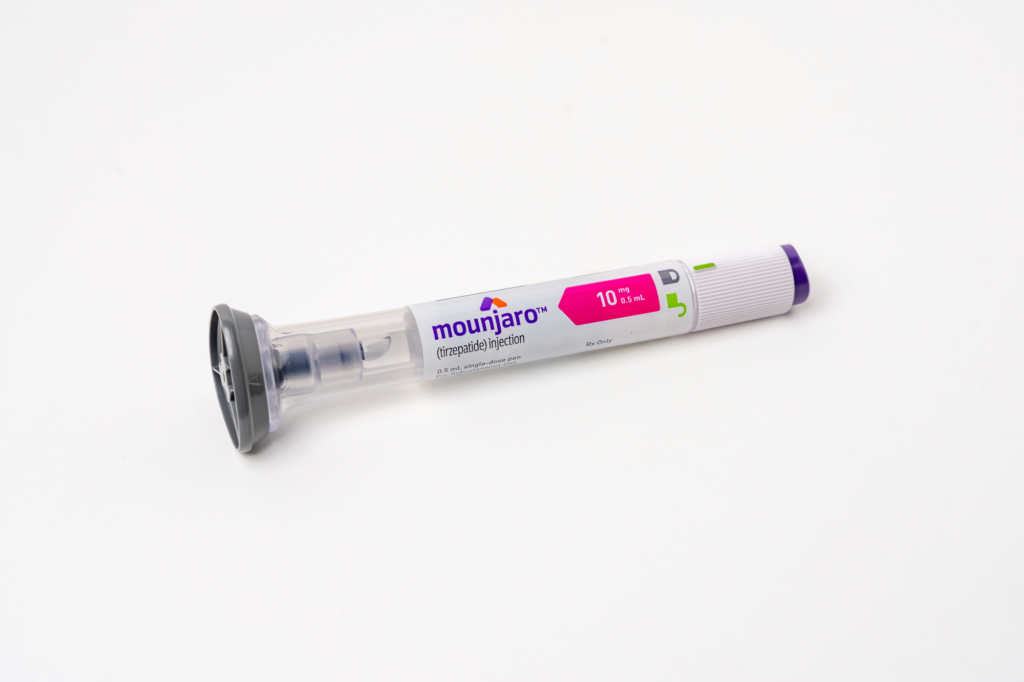The December 2014 issue of Fats of Life highlighted the results from the Cardiovascular Health Study, a large prospective cohort study of elderly Americans. In that study, the association of linoleic acid with cardiovascular and non-cardiovascular causes of death in elderly people was reported. Significant associations were shown to exist in elderly people between a reduced risk of cardiovascular death, particularly that not attributable to arrhythmias, and linoleic acid levels in plasma phospholipids (plasma PL). An association between increased omega-3 LCPUFA levels and a decreased risk of cardiovascular deaths was also found, in particular those attributable to arrhythmias.
A more recent study examining the results from the Cardiovascular Health Study have recently been published in which the understanding of the relationship between essential fatty acid dietary intake and levels in plasma phospholipids, and cardiovascular death was expanded to alpha linolenic acid (ALA).
This article, provided by our content partner Global Organization for EPA and DHA (GOED). Previously published in Fats of Life, a GOED publication, and edited by Gerard Bannenberg, PhD.
Study at a glance:
- Results from a large prospective study in elderly people, the Cardiovascular Health Study, indicate that significant associations may exist between a higher dietary intake of alpha-linolenic acid (ALA) and a decreased risk of total and non-cardiovascular mortality. However, no relation between risk of mortality from various aspects of cardiovascular disease and ALA intake was found.
- In a pooled cohort study of eight prospective studies that covered >220,000 adults, no significant associations between ALA intake and risk of incident coronary heart disease were identified.
- In a controlled weight loss study of overweight adults, daily dietary supplementation with a high ALA dose may facilitate the selective lowering of a circulating marker of inflammation, YKL-40, not previously studied in relation to essential fatty acid intake.
The precise role that ALA plays in supporting human health has remained difficult to understand. This stems in part from an appreciation that the fractional conversion to EPA and DHA is low in the human body particularly for DHA. Furthermore, it is difficult to attribute any biological effects resulting from ALA intake to ALA itself given its role as a precursor of other bioactive PUFA. In addition, the rate of ALA transformation depends on the availability of linoleic acid, which competes with the enzymes required for EPA and DHA biosynthesis from ALA, as well as the expression of these enzymes, which are under several levels of genetic, epigenetic and direct enzymatic control.
Given that in the majority of people ALA is the most abundant omega-3 LCPUFA in the diet, a good understanding of the need for ALA in our diets remains of significant interest. The dietary intake of ALA has approximately doubled in Western societies over the past century, largely due to the wider adoption of vegetable oils. However, the increase in linoleic acid intake has increased far more than that of ALA, contributing to dietary PUFA imbalances that many researchers believe predispose to a higher risk of chronic diseases.

Recent reviews have indicated that ALA does appear to provide benefits for cardiovascular health, but that additional research is necessary. New research investigating the role of ALA as part of a healthy diet remains important in providing fresh insights.
Risk of Cardiovascular Mortality and ALA
A prospective study carried out by Fretts and colleagues from the University of Washington, Seattle, WA, in collaboration with a number of colleagues at Harvard University in Boston, MA, the Fred Hutchinson Cancer Research Center in Seattle, WA, and the University of New Mexico, Albuquerque, NM now reports on the associations between ALA intake, ALA levels in plasma PL, and the risk of cardiovascular mortality, incident coronary heart disease and stroke, in elderly people. The multi-center prospective cohort study, named Cardiovascular Health Study, employed standardized protocols and annual in-clinic evaluations and telephone contact, to follow a large cohort of elderly (≥65 yrs) men and women for a period of 16 years in four geographically-separated communities in the USA.
Enrollment for this study started in 1989, and in 1992 blood samples were taken from those participants 
Mortality from different causes was monitored throughout the study, and classified by mortality from CVD, non-cardiovascular disease-related mortality, and mortality from coronary heart disease (CHD). The latter was further sub-classified into arrhythmic and non-arrhythmic deaths. Furthermore, incident CHD (non-fatal myocardial infarctions and fatal CHD combined) and strokes were measured. Associations between ALA and mortality and disease risk were assessed by quintiles of plasma PL ALA levels and dietary intake of ALA.
The study group from which plasma samples had been obtained had an average age of 73 years at study onset (90% Caucasian and 36% male). During the study period, 1757 deaths occurred. The highest quintile of ALA corresponded to 0.22% of total fatty acids in plasma PL, and the lowest quintile 0.09%. The study found no evidence that a higher level of ALA in plasma PL was associated with a statistically significant change in total mortality. Neither was any statistically significant evidence found for modification of the risk of non-cardiovascular disease-related mortality, total CVD mortality, CHD mortality, arrhythmic death or non-arrhythmic death.
There was a trend suggesting that increasing levels of ALA in plasma PL were associated with a lower total mortality after adjustment for age and sex (P=0.06), with a 9% reduction in risk for total mortality in elderly people with the highest ALA levels compared with the lowest. No association was found between the level of ALA and the risk of incident strokes and CHD. There were no interactions between ALA plasma PL levels with sex, age, linoleic acid and delta-6 desaturase genotype on the risk of death assessed using likelihood ratio tests. In summary, among elderly Americans no marked or statistically significant relationships were found between plasma ALA in PL and the risk for mortality from a wide variety of cardiovascular and non-cardiovascular causes.
Relationship between ALA and stroke
The study investigated possible relationships between dietary ALA at study onset and causes of death, incident CHD or stroke. In the study group that had taken the initial dietary assessment, 1517 deaths were recorded over the course of the study. The highest quintile of ALA intake corresponded to 2.44% of total fat intake, and the lowest quintile to 1.3%. There was a 30% decreased risk of total mortality in elderly people with the highest baseline ALA intake compared to the lowest. Among different causes of death, a 38% decreased risk of death from non-cardiovascular causes was observed. Death from dementia and cancer associated strongly with dietary intake of ALA with cumulative risk reductions of 42% and 30%, respectively. For both total mortality and non-CVD mortality, the trend that increasing intake of ALA was associated with a decrease in the risk of death, was highly statistically significant. No associations between higher ALA intake at baseline and changes in mortality due to CVD, CHD, arrhythmic or non-arrhythmic death, incident CHD and strokes were found.

It is important to take into account some of the limitations of the study, as indicated by the researchers. First of all, a prospective study provides indications of associations between nutrient intake and disease risk, and no causal relationships should be assumed at present. Confounding factors may lead to the association of ALA with reduced cumulative risk of mortality. Among the study subjects with a higher ALA intake there was an increased percentage of women, a higher level of education, fewer smokers, and a lower total and saturated fat intake, and lower total caloric intake. The level of ALA in plasma PL was determined only once at study initiation and the levels of PUFA in plasma PL may be subject to transient concentration changes reflecting recent food intake. A semi-quantitative food-frequency questionnaire was used to determine dietary intake during the year preceding study enrollment, but food-frequency questionnaires are not always considered the most accurate measure of dietary nutrient intake.
Diet and Coronary Disease
A second recently published study by Vedtofte and colleagues from the Institute of Preventive Medicine, at the organization of Copenhagen Municipal Hospitals, Denmark, and colleagues in Scandinavia and the USA, reports on the association of ALA intake and incident CHD through pooling of the data recorded in several prospective cohort studies. The “Pooling Project of Cohort Studies on Diet and Coronary Disease” hypothesized that the intake of ALA is associated inversely with the risk of CHD. The study also assessed whether such an inverse association is stronger in subjects with a low intake of omega-3 LCPUFA than in subjects with a higher intake. The study reports on the pooled results from eight cohort studies that all have i) at least 150 incident CHD cases, ii) dietary intake is determined using a validated food-frequency questionnaire together with a dietary history review or a 7-day weighed food record at baseline, and iii) a validation or a repeatability study of the dietary intake method. The pooling permitted reporting the incidence of fatal and non-fatal CHD for 229.043 subjects older than 35 years who were free of CVD at baseline, until a first CHD event for a period up to 10 years. Associations between ALA intake and CHD events were determined by proportional hazards regression analysis (permitting the study of relative risk over the course of time).
The study reported 4493 CHD events and 1751 CHD deaths. The study showed a trend towards a significant effect modification by sex for ALA with CHD death (P=0.07). In men, there was a non-significant inverse association between the ALA intake and the risk of CHD events and deaths. The risk for CHD death and CHD events was 23% and 15% lower, respectively, for each 1 gram per day additional ALA intake, using regression models that adjusted for a wide range of potential confounding factors. Other models where fewer confounding factors were incorporated showed no marked decrease in risk. ALA intake above the median intake level (1.17 g per day) associated with a statistically significant 9% lower risk for CHD events in men. In women no association between CHD risk reduction and ALA intake was observed.
To address the possibility that any associations were additionally dependent on the baseline levels of omega-3 LCPUFA intake, the hazard ratios were further stratified by energy-adjusted intakes of omega-3 LCPUFA intake below and above the median intake. This showed a non-significant 17% reduced risk of a CHD event in women with low ALA intakes and higher intakes of omega-3 LCPUFA (P=0.06). In men, however, the situation was different, with a small non-significant risk reduction (5%) with both above-median ALA and above-median omega-3 LCPUFA intakes.
The pooled-cohort approach by Vedtofte and colleagues indicates that it is possible to uncover suggestions to the existence of associations between ALA intake and risk of coronary heart disease-associated events and death. However, none of the associations identified in this study were statistically significant, except for a relatively small reduction in risk of CHD events in men with above median intake of ALA. Associations at borderline significance may suggest that higher than median omega-3 LCPUFA intake in women could be associated with protective effects for CHD events in the context of low ALA intake. In adult men, it is possible that higher ALA intake may be related to fewer CHD events, especially in those that also have higher intake of omega-3 LCPUFA. Additional well-defined and long-term studies are needed to confirm if the preliminary indications for these associations are indeed seen in adults.
ALA and Metabolic Syndrome
A further approach to better understand the possible importance of ALA in the diet is through experimental intervention under controlled conditions. Egert and colleagues have undertaken a controlled exercise and dietary intervention study that takes a step further in this direction. Working in the Department of Nutrition and Food Science, at the University of Bonn in Germany, together with colleagues at the University of Applied Sciences, Münster, and the Ruhr-University Bochum, the researchers have studied a group of overweight-to-obese patients with metabolic syndrome that received a 6-month weight-loss intervention. Half of the study participants received a hypo-energetic diet containing a low daily content of 0.9 g ALA, and the other half the same diet with a high daily content of 3.4 g ALA.

Conclusion
Taken together, studying the importance of dietary ALA for health remains a difficult exercise, yet gradual advances can be gleaned from the recent studies highlighted here. A healthy debate on the relative importance of the beneficial effects of dietary ALA continues as some studies have indicated protective effects of ALA for cardiovascular health, but long-term studies and randomized controlled clinical trials are needed to support the findings reported to date. Careful consideration of confounding variables, further understanding of the interactions between different dietary PUFA, the analysis of pooled data from multiple trials, sampling the most appropriate pool of lipids responsive to dietary changes of individual PUFA, and obtaining additional mechanistic insight in the action of dietary ALA, illustrate that progress may be made when well-defined population groups are followed. It is interesting to note that in the elderly, higher ALA intake is associated with lower risk of causes of death not related to cardiovascular disease. These include deaths from cancer, infections, trauma/fracture, respiratory disease and dementia. Recognizing such associations beyond cardiovascular health reminds us that essential fatty acids are important to multiple aspects of good health.
Sources:
Egert S, Baxheinrich A, Lee-Barkey YH, Tschoepe D, Wahrburg U, Stratmann B. Effects of an energy-restricted diet rich in plant-derived α-linolenic acid on systemic inflammation and endothelial function in overweight-to-obese patients with metabolic syndrome traits. Br. J. Nutr. 2014;112(8):1315-1322. [PubMed] (on file)
Fretts AM, Mozaffarian D, Siscovick DS, Sitlani C, Psaty BM, Rimm 3EB, Song X, McKnight B, Spiegelman D, King IB, Lemaitre RN. Plasma phospholipid and dietary α-linolenic acid, mortality, CHD and stroke: the Cardiovascular Health Study. Br. J. Nutr. 2014;112(7):1206-1213. [PubMed] (on file)
Vedtofte MS, Jakobsen MU, Lauritzen L, O’Reilly EJ, Virtamo J, Knekt P, Colditz G, Hallmans G, Buring J, Steffen LM, Robien K, Rimm EB, Heitmann BL. Association between the intake of α-linolenic acid and the risk of CHD. Br. J. Nutr. 2014;112(5):735-743. [PubMed] (on file)
Worth Noting
Astorg P, Bertrais S, Laporte F, Arnault N, Estaquio C, Galan P, Favier A, Hercberg S. Plasma n-6 and n-3 polyunsaturated fatty acids as biomarkers of their dietary intakes: a cross-sectional study within a cohort of middle-aged French men and women. Eur. J. Clin. Nutr. 2008;62(10):1155-1161. [PubMed]
Blasbalg T, Hibbeln JR, Ramsden CE, Majchrzak SF, Rawlings RR. Changes in consumption of omega-3 and omega-6 fatty acids in the United States during the 20th century. Am. J. Clin. Nutr. 2011;93(5):950-962. [PubMed]
Burdge GC, Calder PC. Conversion of alpha-linolenic acid to longer-chain polyunsaturated fatty acids in human adults. Reprod. Nutr. Dev. 2005;45(5):581-597. [PubMed]
Campos H, Baylin A, Willett WC. Alpha-linolenic acid and risk of nonfatal acute myocardial infarction. Circulation 2008;118(4):339-345. [PubMed]
Drewnowski A. Diet image: a new perspective on the food-frequency questionnaire. Nutr. Rev. 2001;59(11):370-372. [PubMed]








